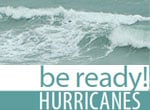How to Prevent the Spread of Respiratory Illnesses in Disaster Evacuation Centers
DISASTER RECOVERY FACT SHEET

People crowded together in places such as evacuation centers are vulnerable to outbreaks of respiratory illnesses. In some cases, such as with influenza, germs can spread very rapidly in these settings and may have important health consequences for residents and workers, particularly for persons who are at higher risk for complications from influenza. This document provides guidance for evacuation center workers and residents on some simple measures that can help prevent transmission.
- Many of the germs that cause respiratory (breathing) diseases are spread by droplets that come from coughing and sneezing. These germs usually spread from person to person when uninfected persons are in close contact with a sick person. Some people may become infected by touching something with these germs on it and then touching their mouth or nose.
- In general, the best way to help prevent spread of respiratory germs is to avoid contact with droplets or secretions of saliva, mucus and tears. Things that can help include the following:
- Minimize close contact with persons who have symptoms of respiratory illness, such as coughing or sneezing.
- Help ill persons contain droplets that result from their coughing and sneezing (see Respiratory Hygiene/Cough Etiquette).
- Wash your hands regularly.
- Avoid sharing personal items such as eating or drinking utensils, toothbrushes, and towels. You should especially avoid sharing these items with sick persons.
- Maintain a clean environment.
- Some respiratory illnesses, such as influenza, can be prevented with a vaccine. Check with local health officials to see if influenza vaccination is available at your evacuation center. Use the Flu Vaccine Finder to find the nearest clinic. The Vaccines and Preventable Diseases page also provides a detailed list of recommended and non-routine vaccines by disease in the U.S.
General measures for all evacuation center workers and residents
- Wash hands regularly. This is especially important after touching surfaces or objects that might be contaminated with respiratory droplets, or after touching persons who are ill with respiratory symptoms. Alcohol hand gels are an adequate substitute when soap and clean water are not readily available. (See Infection Control Guidance for Community Evacuation Centers Following Disasters.
- Maintain a clean living environment. If frequently touched surfaces are contaminated with respiratory droplets or secretions:
- Wipe up visible material with paper towels and dispose of used towels in a plastic garbage bag
- Disinfect using any standard household disinfectant
- Take everyday preventive measures including the following:
- Do not share eating utensils or drinking containers
- Do not share other personal articles such as toothbrushes or towels with anyone else
- Staff should separate sleeping cots by 3-6 feet (1-2 meters), if possible, to reduce the potential for spread of respiratory droplets between evacuation center residents.
Measures for persons with symptoms of respiratory illness
- Provide persons with symptoms of respiratory illness with information on preventing spread of illness by practicing respiratory hygiene and cough etiquette, which includes the following:
- Cover the nose and mouth when coughing or sneezing
- Use tissues to contain respiratory droplets or secretions
- Throw away used tissues in the nearest garbage bag after use
- Perform hand hygiene (e.g., hand washing with soap and water, or alcohol hand gel) after having contact with respiratory secretions and contaminated objects/materials
- When possible, provide residents with the materials to adhere to respiratory hygiene and cough etiquette:
- Provide tissues and a container for used tissue disposal (e.g., paper or plastic bag)
- Provide personal dispenser of alcohol hand gel; where sinks are available, ensure that supplies for hand washing (i.e., soap, disposable towels) are consistently available
- Separate sick persons and close contacts from other residents until 24 hours after the respiratory illness symptoms are gone. If possible, put sick persons in a separate room or in a separate section of the evacuation center away from other residents who are not sick. If this is not possible, encourage persons with respiratory illness to stay at least 3-6 feet away from those not providing direct care and support.
- Persons who are not ill should avoid close contact with sick persons (e.g., kissing, hugging, hand shaking, other direct touching, talking within 3-6 feet), except as necessary to provide care and support.
- Evacuation center workers who are symptomatic should be excused from work.
Screening guidance for clinicians and evacuation center workers
To prevent the spread of respiratory illness in evacuation centers, clinicians and staff should try to identify ill persons and use appropriate infection control measures as soon as possible. Evacuation center workers should screen evacuation center residents for symptoms of respiratory illness. In addition, they should refer ill persons for medical evaluation in order to ensure appropriate diagnosis and treatment. Early diagnosis can be an important part of prevention. You can find more information about medical care during disasters on the Medical Care of Ill Disaster Evacuees: Additional Diagnoses to Consider web page.
- If possible, post visual reminders in the residential areas of evacuation centers that instruct residents and workers to report symptoms of a respiratory infection. You should also use visual alerts to encourage the practice of respiratory hygiene and cough etiquette. Examples of such visual alerts are available on the page Cover Your Cough.
- If possible, screen for respiratory illness among residents and workers upon initial evacuation center admission or registration.
- Ask every resident and worker about the following symptoms of respiratory illness:
- Cough
- Sneezing
- Sore throat
- Fever
- Wheezing
- Shortness of breath
- Night sweats
- Runny nose
- Weight loss
- Ask persons with respiratory symptoms if they have asthma or chronic obstructive pulmonary disease (COPD), including emphysema.
- Ask every resident and worker about the following symptoms of respiratory illness:
- Refer any person meeting one of the following criteria for medical evaluation:
- Any person with respiratory symptoms that are accompanied by fever, wheezing, or shortness of breath
- Any person with a chronic cough (a cough that persists for weeks or months) that is accompanied by either fever, night sweats, or weight loss
- Any person with respiratory symptoms who also has asthma or COPD
- If residents do not have symptoms of respiratory illness upon initial evacuation center admission or registration, tell them to report any new respiratory symptoms to staff when they first occur.
These guidelines are specific for controlling respiratory illness in evacuation centers. For additional information, see:


